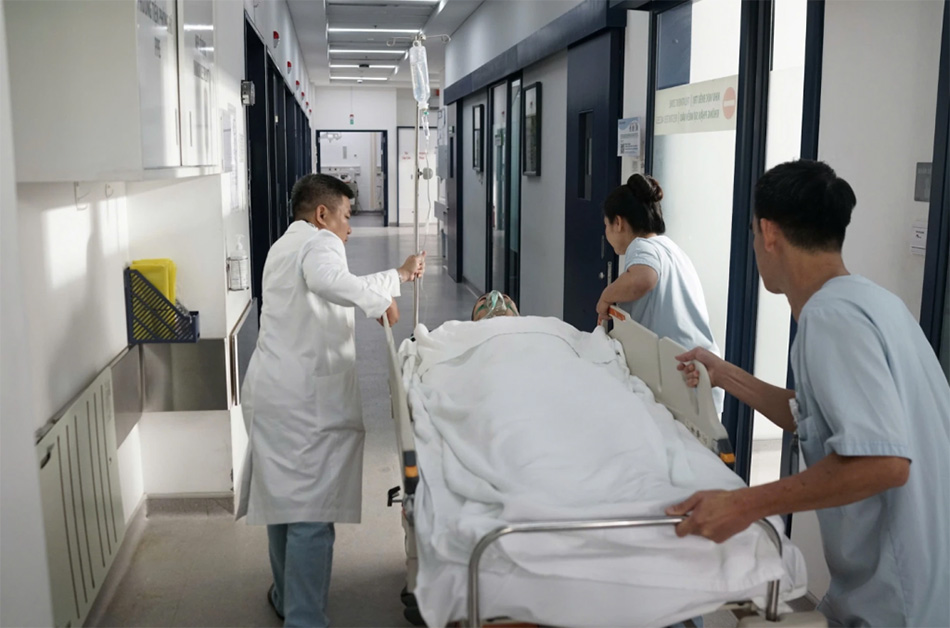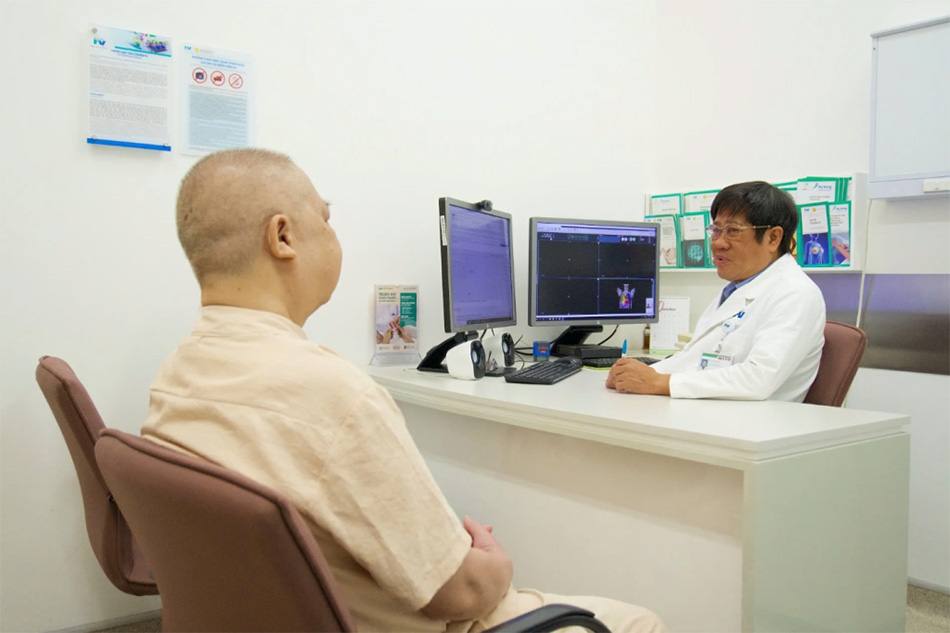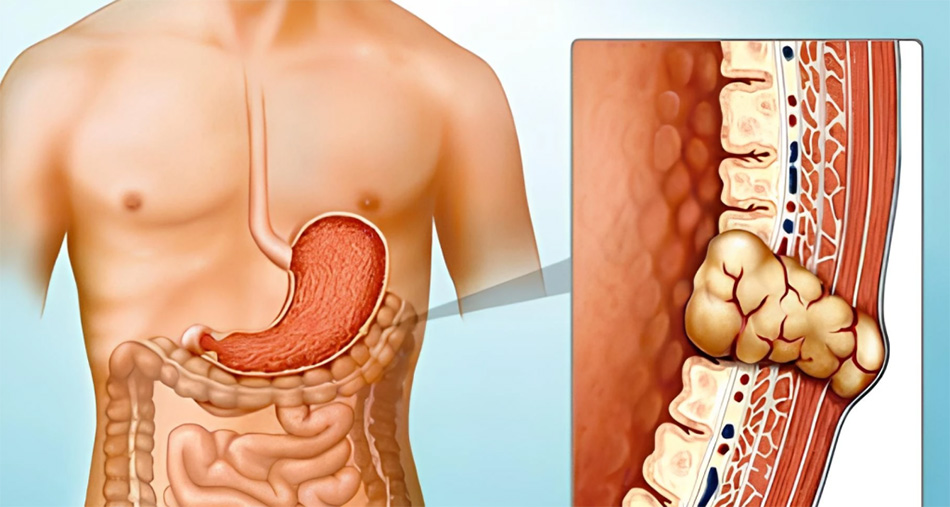After two unsuccessful treatments for cancer, Mr H.G.T.’s health had severely declined from undergoing multiple rounds of chemotherapy and frequent emergency hospitalisations for blood transfusions. During a critical admission to FV Hospital, doctors correctly identified his condition as a gastrointestinal stromal tumour (GIST). Thanks to two years of targeted therapy, Mr T. has now returned to a normal life.
His family is overjoyed and deeply grateful for the accurate diagnosis and effective treatment, which they believe has given Mr T. a second chance at life.

Mr T. regained stable health after two years of cancer treatment at FV Hospital
Nearly Lost His Life Due to Two Misdiagnosed Treatments
In May 2021, during a routine health check-up at a private hospital, Mr H.G.T. was shocked to be diagnosed with prostate cancer. However, after undergoing chemotherapy, his body became severely weakened.
His family then sought help from another hospital, where doctors diagnosed him with adrenal gland cancer that had metastasized to the liver. Once again, chemotherapy was prescribed; however, his body failed to respond to the treatment. This led to further physical deterioration, significant blood loss, and prolonged anaemia, leaving him in frequent need of emergency blood transfusions.

The patient was rushed to FV Hospital for emergency care
By August 2022, Mr T.’s condition had worsened significantly. His family, clinging to a sliver of hope, rushed him to FV Hospital in a fragile state.
Based on the examination results, Dr Vo Kim Dien from the Hy Vong Cancer Care Centre noted that Mr T. was suffering from severe anaemia. While normal haemoglobin levels range from 12.5 to 17.5, his levels were alarmingly low at 7-8, occasionally dropping to 5-6. Suspecting gastrointestinal bleeding, Dr Diem ordered imaging scans and gastrointestinal endoscopy for a more accurate assessment
“The imaging results revealed that the patient’s prostate was normal. However, upon reviewing the scans, I identified a lesion at the lower esophagus, which was quite characteristic of a Gastrointestinal Stromal Tumor (GIST), measuring up to 90mm. The cancer had metastasized to the liver, with the metastatic tumor measuring as large as 120mm,” said Dr Dien.
Additionally, Mr T. was diagnosed with gastric mucosal bleeding and chronic kidney failure, both of which contributed to his anaemia. However, the primary reason for his frequent emergency hospitalizations.
The digestive tract is structured like a muscular tube, with a wrinkled inner lining called the mucosa layer, beneath which lies the submucosa layer, followed by the outer muscle layers. Dr Dien explained that most gastrointestinal cancers originate from cells in the mucosa layer, GIST tumors arise from the submucosa layer or even the muscle layers, making diagnosis challenging and often leading to incorrect treatment.
Targeted Therapy: Effectively Shrinks GIST Tumours, Eliminating the Need for Surgery
Drawing from his experience in treating GIST tumours, Dr Vo Kim Dien explained that surgery is typically recommended if the cancer has not metastasized. However, in Mr T’s case as the cancer had already spread, surgery was not an option, making targeted therapy the preferred treatment.
“Targeted therapy drugs act selectively on tumor cells, meaning they attack the tumor cells while having minimal impact on healthy cells. Although this type of medication is not new, it remains the optimal choice for treating gastrointestinal stromal tumors (GIST” Dr Dien explained.

Dr Dien conducted a follow-up examination for the patient
Since August 2022, Mr T. has been undergoing daily targeted therapy with regular follow-up exams. His health gradually improved, demonstrating a positive response to treatment. To manage his chronic kidney failure, he was also monitored by a nephrologist. After two years, imaging results revealed significant progress, the oesophageal tumour had shrunk from 90mm to 15mm, while the liver tumour had reduced from 120mm to 49mm. Mr T. continues to take medication to control the tumours effectively.
During his follow-up at FV, Mr T. shared his delight in his significantly improved health. His daughter, Ms H.T.P.T., remarked: “At other places, the incorrect diagnosis only worsened my father’s condition. At FV, they diagnosed the right condition and provided proper treatment. When my father was admitted, he was in a critical condition and unable to move, but now he can live independently. It’s like he has truly been ‘reborn’!”
Signs to Help Detect Gastrointestinal Stromal Tumours (GISTs)
According to annual statistics in the United States, 4,000 to 6,000 cases of Gastrointestinal Stromal Tumours (GISTs) are diagnosed each year. Among them, approximately 60% occur in the stomach, and around 30% are found in the small intestine. GISTs in the oesophagus, as in the case of Mr. T, are extremely rare, accounting for only 0.7%.

Illustration of GIST tumour, a type of tumour that occurs in the digestive tract
Gastrointestinal stromal tumours (GISTs) often develop silently, with noticeable symptoms such as difficulty swallowing emerging only as the tumour grows larger. Tumours in the mucosal layer may cause swallowing difficulties earlier, whereas those beneath the mucosa tend to show symptoms later.
“If detected early, when the lesion is still localized, the 5-year survival rate can reach up to 93%. However, when the lesion has spread to other organs, the 5-year survival rate drops to 55%” explained Dr Dien. He also advised people to seek medical attention if they experience symptoms such as difficulty swallowing, nausea and vomiting, unexplained fatigue, prolonged anemia, or bleeding.
For treatment inquiries regarding gastrointestinal stromal tumours or other types of cancer, readers can contact the Hy Vong Cancer Care Centre at FV Hospital by calling (028) 35 11 33 33.



